
Home
- Artifacts
- Buildings & Businesses
- Churches
- Holidays & Celebrations
- Counties/Locations
- Delta College
- Early Settlers
- Ethnic Background
- Local, Michigan, U.S. and World Events
- Family Genealogy
- Farming
- Libraries & Museums
- Local Sites
- Logging
- Musicians, Artists & Famous People
- Nature, Weather & Four Seasons
- Railroads
- Schools
- Sports
Welcome to the Grand Forks! That's what the folks would have said before Beaverton was ever born, or actually made a city. Within a few years the population went from a very few, to 735, to about 9,236 now. Beaverton has always been a community that will come together no matter what, as they did when my cousin was ill with a brain tumor. Everyone was sending food, spending time with the family, and even held an auction for him to help raise money for his hospital bills. That is one reason this is such a great town to grow up in. Now, let me tell you a little about how Beaverton became Beaverton.
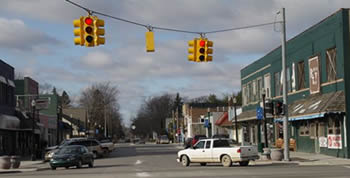 |
It was the year of 1899 when Mr. Donald Ross and his sons William, Ronald, George, and Donald and their aunt Ellen Fraser made the long journey from Ontario, Canada to look for a new settlement. They came upon a little village in Michigan in 1901 known as the Grand Forks or Three Forks. At this time they thought this would be the place of opportunity. Since the Grand Forks was the center village and the three forks of the Tobacco River met right in town, it made the perfect location for a lumbering operation (Fries 93). After getting settled, the Ross brothers started their own lumbering business and became very successful.
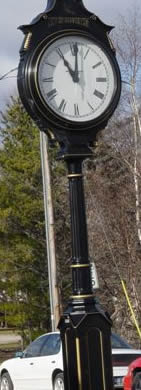 |
Donald G. Ross was known as the "Father of Beaverton" and renamed the Grand Forks in 1903 to the city of Beaverton. Donald constructed most of Beaverton and got it started to make it what it is today. He started out by building a grain elevator, water power for electricity, and a water pumping station. He also built an electric plant which he later sold to Consumer's Power. Donald was a very creative man; he owned the largest cedar-block sawmill in the state, which gave Beaverton the only city around to have cedar-block pavement streets ("Our Neighbors"). Along with all of Donald's hard work, he was also a family man. He had his wife Hattie at home with his newborn son Walter, in 1908.
Walter, Donald's son, grew up to be a very successful man in Beaverton. He made it through grade school and advanced to high school, where he was an outstanding football and basketball player. He graduated from Beaverton in 1925 and went on to attend Ferris State University (Freis 317). When he was through with school and returned home, he met his future wife, Virginia Meyers. They were married in 1932 and had a daughter Nancy, "Grandma Nancy," two years later.
Like his father, Walter was not only good in school or with his family, but he to was also a very successful business man. He first started out by owning a little store called Ross's Dry Goods Store. After selling his store he went on to become a partial owner of Brown Machine, in 1959, a thermoforming business that still operates today. After fourteen years, he decided to retire in 1973 and live the rest of his days watching his grand children and great grandchildren grow. Then, in 1990, a sad day came when Mr. Walter Ross, a lifetime resident of Beaverton, passed on (Freis 317).
Looking back on Walter's sports days, basketball meant just as much to the town then as it does today. Sometime in the 1940's there appeared a mascot dog called "Butch". Butch was shuffled back and forth between the Beaverton Boys Varsity Basketball Team and their rival eight miles away, the Gladwin Boys Varsity Basketball Team, depending on Victory. Basketball is a big part of Beaverton, along with the coach, Mr. Roy Johnston, who has been with Beaverton for twenty-eight years. The red and the white have always been known as a winning team, and that is the way it will stay. The two Beaverton versus Gladwin games have always been the biggest games of the season because of the rivalry (Red Rave: A Season). It has been great to grow up with such a good boy's basketball team and be able to watch the town come together as the team advanced all the way to the quarterfinals. No matter what, they always have a season to remember (Hopfensperger 1). Today, Butch resides at Beaverton High School with the undefeated boy's team. These games are another event that helps pull our community together, to show their support of the team and cheer them on to victory.
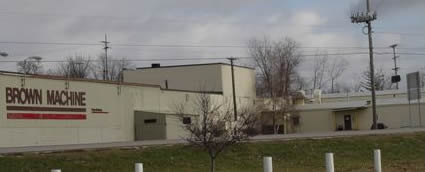 |
Looking back at Brown Machine, it was founded in 1934 by Charles A. Brown and his son Gaylord. It started out as a general repair garage, but during the Depression while all of the other businesses were failing, Brown's kept going by repairing equipment for the oil drillers and by making products for many different construction industries. In 1945, Charles felt he was getting too old to run the business so he sold his half to his son. A few years later, in 1952, Brown's had a major change--they were asked to design a new machine for thermoforming refrigerator parts. When the parts were completed Brown's became very successful. Since 1934, Brown's has manufactured over ten thousand thermoformers. Beaverton is known as the thermoforming capital of the world (Fri 72).
Not only was thermoforming big in Beaverton, but so was farming. One of the biggest farms known was the Crockett Family Farms. It was one of the oldest landmarks that started out in 1911. The Crockett Family Farms was well known for their dairy cows, sawmill, stud horses, and crops. They used to distribute milk to the residents and business in town, cut and log trees for themselves and others, and service work horse mares; stud fees were six dollars and customers were guaranteed a live foal. They also planted corn, hay, soybeans, wheat, and barley on seven hundred acres of land. All this hard work is what kept their family and farm going strong for so long. Then, in 1991, after one of the brothers had passed away the farm had become too much to handle and was sold. The new high school sits on land which was once was occupied by the Crocket t's cornfield (Crockett-woodruff).
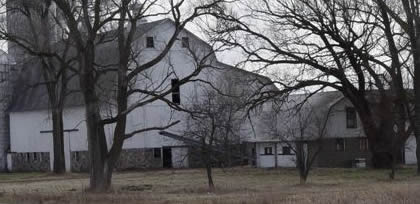 |
Throughout the years, Beaverton has undergone several changes to make it a better place. I believe Bob Fri sums up the making of Beaverton by stating the following in his book, Beaverton: A Century in the Making:
*Many people, buildings, industries and institutions have gone and gone, but are all yet a part of who we are and why we are. The character of the city derives from the people, industries and institutions that built it--and from the disasters that changed it. We can much better guide the future, add our own identities to the city ,and build on the foundations already laid, when we know its past. (2)*
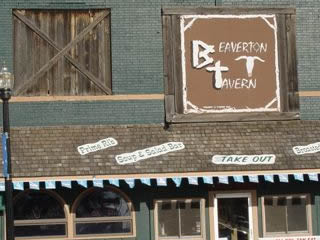 |
After celebrating our centennial this past summer, I have realized how many things have actually changed in our town and how many things have stayed the same. Main Street in Beaverton has the exact same set-up today as it did back in 1903. The only things that have changed are the stores; they has been a lot of remodeling due to many tragic fires. The latest additions to our town are the stoplight that we just received about four years ago and our high school that was built five years ago. One of the oldest original buildings is the Beaverton Tavern, which still stands today and attracts people from all over with its fine cuisine. After the hundredth year of the making of Beaverton, I feel that this is a place that, no matter what, I will always call home.
Works Cited
- Fri, Robert W. Beaverton: A Century in the Making. Beaverton, MI: 2003.
- Freis, Bernice Walker Ritchie. Gladwin History: Then and Now. Gladwin, MI: 1989.
- Hopfensperger, Marie. "A Season to Remember." Gladwin County Record. 27 Mar. 2002.
- "Neighborhood Profile." Yahoo! Real Estate. 2003. <http://realestate.yahoo.com/>. "Our Neighbors at.. .Gladwin and Beaverton." Saginaw News 12 Dec. 1948.
- Red Rave: A Season of Beaverton Basketball. Videocassette. Jason Brown Production. 2002. 230 min.
- U.S. Census Department. ISP Directory for Beaverton Michigan. 2000. <http://www.findanisp.com/isps/Ml/beaverton/36318>.
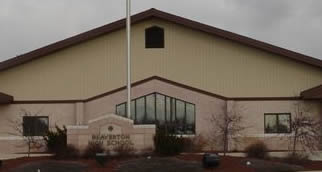
| The written and visual works in Mid-Michigan Remembers-Stories about Us were chosen on the basis of their quality, diversity, community interest and appeal. Views expressed do not necessarily reflect those of the College. This space is provided as a service by Delta College. |